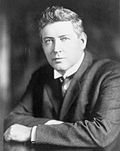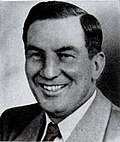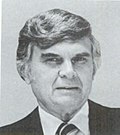| Member | Party | Years | Cong
ess | Electoral history |
|---|
| District established March 4, 1893 |

William R. Ellis
(Heppner) | Republican | March 4, 1893 –
March 3, 1899 | 53rd
54th
55th | Elected in 1892.
Re-elected in 1894.
Re-elected in 1896.
Lost renomination. |

Malcolm A. Moody
(The Dalles) | Republican | March 4, 1899 –
March 3, 1903 | 56th
57th | Elected in 1898.
Re-elected in 1900.
Lost renomination. |

John N. Williamson
(Prineville) | Republican | March 4, 1903 –
March 3, 1907 | 58th
59th | Elected in 1902
Re-elected in 1904.
Retired. |

William R. Ellis
(Pendleton) | Republican | March 4, 1907 –
March 3, 1911 | 60th
61st | Elected in 1906.
Re-elected in 1908.
Lost renomination. |

Walter Lafferty
(Portland) | Republican | March 4, 1911 –
March 3, 1913 | 62nd | Elected in 1910.
Redistricted to the 3rd district . |

Nicholas J. Sinnott
(The Dalles) | Republican | March 4, 1913 –
May 31, 1928 | 63rd
64th
65th
66th
67th
68th
69th
70th | Elected in 1912.
Re-elected in 1914.
Re-elected in 1916.
Re-elected in 1918.
Re-elected in 1920.
Re-elected in 1922.
Re-elected in 1924.
Re-elected in 1926.
Resigned to become judge to the U.S. Court of Claims. |
| Vacant | May 31, 1928 –
November 6, 1928 | 70th | |

Robert R. Butler
(The Dalles) | Republican | November 6, 1928 –
January 7, 1933 | 70th
71st
72nd | Elected to finish Sinnott's term.
Also elected to the next full term.
Re-elected in 1930.
Lost re-election and died before next term began. |
| Vacant | January 7, 1933 –
March 3, 1933 | 72nd | |

Walter M. Pierce
(La Grande) | Democratic | March 4, 1933 –
January 3, 1943 | 73rd
74th
75th
76th
77th | Elected in 1932.
Re-elected in 1934.
Re-elected in 1936.
Re-elected in 1938.
Re-elected in 1940.
Lost re-election. |

Lowell Stockman
(Pendleton) | Republican | January 3, 1943 –
January 3, 1953 | 78th
79th
80th
81st
82nd | Elected in 1942.
Re-elected in 1944.
Re-elected in 1946.
Re-elected in 1948.
Re-elected in 1950.
Retired. |

Sam Coon
(Baker) | Republican | January 3, 1953 –
January 3, 1957 | 83rd
84th | Elected in 1952.
Re-elected in 1954.
Lost re-election. |

Al Ullman
(Baker) | Democratic | January 3, 1957 –
January 3, 1981 | 85th
86th
87th
88th
89th
90th
91st
92nd
93rd
94th
95th
96th | Elected in 1956.
Re-elected in 1958.
Re-elected in 1960.
Re-elected in 1962.
Re-elected in 1964.
Re-elected in 1966.
Re-elected in 1968.
Re-elected in 1970.
Re-elected in 1972.
Re-elected in 1974.
Re-elected in 1976.
Re-elected in 1978.
Lost re-election. |

Denny Smith
(Salem) | Republican | January 3, 1981 –
January 3, 1983 | 97th | Elected in 1980.
Redistricted to the 5th district . |

Robert F. Smith
(Burns) | Republican | January 3, 1983 –
January 3, 1995 | 98th
99th
100th
101st
102nd
103rd | Elected in 1982.
Re-elected in 1984.
Re-elected in 1986.
Re-elected in 1988.
Re-elected in 1990.
Re-elected in 1992.
Retired. |

Wes Cooley
(Alfalfa) | Republican | January 3, 1995 –
January 3, 1997 | 104th | Elected in 1994.
Renominated but withdrew prior to election. |

Robert F. Smith
(Medford) | Republican | January 3, 1997 –
January 3, 1999 | 105th | Elected in 1996.
Retired. |

Greg Walden
(Hood River) | Republican | January 3, 1999 –
January 3, 2021 | 106th
107th
108th
109th
110th
111th
112th
113th
114th
115th
116th | Elected in 1998.
Re-elected in 2000.
Re-elected in 2002.
Re-elected in 2004.
Re-elected in 2006.
Re-elected in 2008.
Re-elected in 2010.
Re-elected in 2012.
Re-elected in 2014.
Re-elected in 2016.
Re-elected in 2018.
Retired. |

Cliff Bentz
(Ontario) | Republican | January 3, 2021 –
present | 117th
118th
119th | Elected in 2020.
Re-elected in 2022.
Re-elected in 2024. |


















